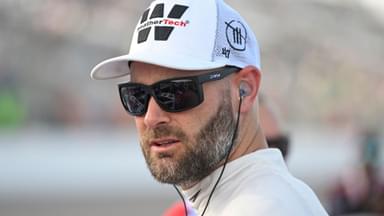Justin Marks launched Trackhouse Racing as a single-car operation in 2021, and momentum built quickly. In 2022, the team expanded to two entries, with Ross Chastain taking the wheel of the No. 1 and Daniel Suárez already driving the No. 99. That year, Chastain finished runner-up in the championship while Suárez placed 10th, signaling the arrival of a serious contender.
Advertisement
However, the climb stalled soon after. Chastain maintained at least one win per season but slid to ninth in points with two wins in 2023, then fell to 19th last year, missing the playoffs entirely. Suárez ended his third Cup season with the team in 19th without a win and improved to 12th the last year.
Despite flashes of speed, both drivers often came close without sealing the deal, and the team found itself searching for answers. That quest found a major turning point this season with the arrival of Shane van Gisbergen. His four road course victories, combined with Chastain’s Coca-Cola 600 win, have vaulted Trackhouse back into contention.
Reflecting on the ups and downs, Marks acknowledged that every organization cycles through peaks and valleys, with success hinging on knowledge, technology, and process. He credited their 2022 surge to the early days of the Next Gen car.
“When the car first came out and the teams didn’t really know how to fully exploit the Next Gen car,” Marks said. “And we were going to the races in 2022 and 2023, it was really just kind of like an execution game of just getting the car on the racetrack and executing well, and we’re a great team at execution. That really fell into our wheelhouse, so we had a lot of success in ’22 and ’23.”
However, he could see the landscape shift after that season as the more established teams had started figuring out how the car operates and how to effectively utilize it.
Marks added, “Then you have the normal players, your Hendrick Motorsports, Gibbs, and Penske, that over time really start to activate the depth in their organizations and the tools and technology they have to really understand what makes the car go fast, and so it’s a different ballgame now than it was in ’22.
“As that knowledge center around the cars has developed, that’s where we have found where it’s been more difficult for us because, as an organization, we’re not as big as Penske and Gibbs and all that.”
Marks admits the competition has only grown fiercer, with the cream inevitably rising to the top. Still, he believes the blueprint now in place offers a chance for Trackhouse to return stronger than ever and contend for a championship. He has studied the plan, its methodology, and the mindset driving it, calling it a true championship framework.
It will demand funding, sacrifice, patience, and relentless work, but Marks now has a clear vision of where to invest and where to focus in order to bring Trackhouse back to the sport’s upper tier.
Marks elaborates on Trackhouse Racing’s status as a third Chevy team in the Cup Series
Aside from Hendrick Motorsports, Richard Childress Racing and Trackhouse Racing stand as Chevrolet’s flagship teams in the Cup Series, with Kaulig Racing, Legacy Motor Club, Spire, and Hyak Motorsports also fielding Chevrolets. And Marks believes Trackhouse has the potential to rise to the top of that ladder.
He noted that his team receives the same level of support and equipment as Hendrick Motorsports through their key technical alliance. Yet he acknowledged Hendrick’s organizational depth far exceeds what Trackhouse currently possesses. Still, he remains bullish about their prospects, crediting the current race car as the reason he entered the sport in the first place.
Marks pointed out that if this were 2013, the climb would be far steeper, as teams were still designing and building their own cars. In the spec era, success hinges on working within the narrow window available and mastering the playbook that leads to victory.
While praising Chevrolet’s backing and the access to data and resources that come with it, Marks stressed that the value lies in how a team uses that information. “You’re only as good as what you can do with that support and what you can do with that access and that data,” he said, adding that this is the current focus inside Trackhouse.
Confident in their course, Marks envisions Trackhouse ultimately building a business model capable of consistently putting the team in championship contention.







